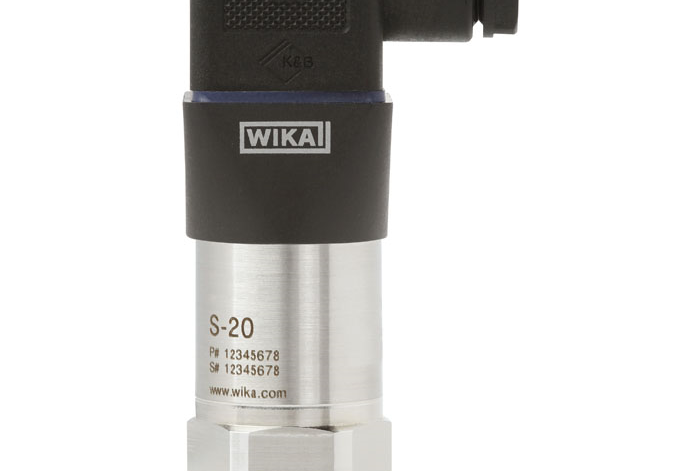
Pressure measurement is an important element in fluid power (hydraulics and pneumatics) as well as in the process industry to ensure safe operation and enhanced performance. Besides accuracy and many other factors the selection of the appropriate measuring range of a pressure sensor is an important step. When selecting the measuring range of pressure sensors, two factors come into play:
- Ensure that the sensor is not destroyed by overloading the sensing element by selecting a measuring range that is too small.
- Avoid compromised accuracy or a too low output signal by selecting a measuring range that is way too large.
This article deals with the second point and the effects of selecting a too large range. When looking at the data sheets of different manufacturers, you will typically find three different values regarding the pressure range:
- Rated operating pressure
- Safe operating pressure
- Burst pressure
Different manufacturers may use slightly different terms (and you should always enquire about a precise definition) but in principle there is a common understanding. It is important to notice that only in the rated pressure range all specification values as described in the data sheet are applicable/ valid. This is in particular true if it comes to accuracy/ error values. Once you exceed the rated pressure range, the data sheet values are no longer guaranteed and may be exceeded, i.e. the output signal can no longer be used for obtaining accurate measurements. But what happens, if you select a measuring range that is much larger, i.e. you only use a fraction of the rated pressure range, say 250 psi of a 1000psi sensor? The Good News Well-nothing. Or at least not very much. The truth is, that most accuracy parameters, like linearity, repeatability, hysteresis etc. are parameters that are in relation to the actual reading/ value, not to the full scale. Their maximum value is defined in the data sheet and expressed as a percentage of the rated pressure range, but the error in service actually “scales down” with usage. Example If linearity (or better: non-linearity) is defined as 0.1% of full scale (f.s.), it means that a 1000 psi pressure sensor can experience as much as 1psi deviation from the ideal line and this is expected to happen somewhere around half of the range, i.e. at 500psi. But when you measure only 250psi with the same transducer, the linearity is expected to deviate not by 1psi but only by a fraction of it. In fact, if you would use a 1000 psi sensor to measure pressure from 0 to 500 psi only, the expected linearity error between zero and 500psi is about 0.25psi and is expected to peak somewhere around 250 psi. (more details about errors and accuracy can be found in the article: “Pressure Sensor Fundamentals: Interpreting Accuracy and Error”. Smart Transmitters So called “Smart Transmitters” rely on this effect heavily as they are typically only available in a very few (5-6 ) pressure ranges, i.e. they virtually always only use a part of the rated pressure range by design. The only errors that do not scale down are errors related to the zero-point of the sensors: a) zero point accuracy/ calibration, and b) temperature effect on zero (TCzero). Both are in the data sheet defined as a percentage of full scale and their absolute value remains constant for the individual sensor- independent of how much of the range is used. In our example above of a 1000 psi rated sensor, let’s assume a 0.5% error on zero = 5psi. Whether you measure 1000psi or 500psi or 10psi- you must always expect an offset in zero of up to 5 psi in a specific sensor. Practical implication: very little as most sensors are “zeroed” when hooked up to a meter or PLC anyway during installation. But what about resolution? The only other limitation you need to be aware of is the resolution of your receiving electronics, i.e. your Analogue input card of your PLC or the input of your meter or display. In most cases today this is not a problem anymore, as they typically provide resolution of 12 bit and beyond. If we look at our example above again and assume that we only use the sensor up to 250psi, this would still provide us with a 10 bit resolution (in case of a 12 bit A/D) providing 0.1% resolution from 0 to 250 psi (=0.25psi). Summary Choosing the right pressure range for an application is important but not rocket science. Modern pressure sensors provide a huge number of ranges to choose from—readily available at short notice. Carefully considering the individual application with regard to overpressure is more important than worrying about losing accuracy or resolution. If in doubt or need help—give WIKA a call, or visit www.wika.us, We are glad to help. Further reading: Back to Basics: Introduction to Pressure Measurement Pressure Sensor Fundamentals: Interpreting Accuracy and Error

